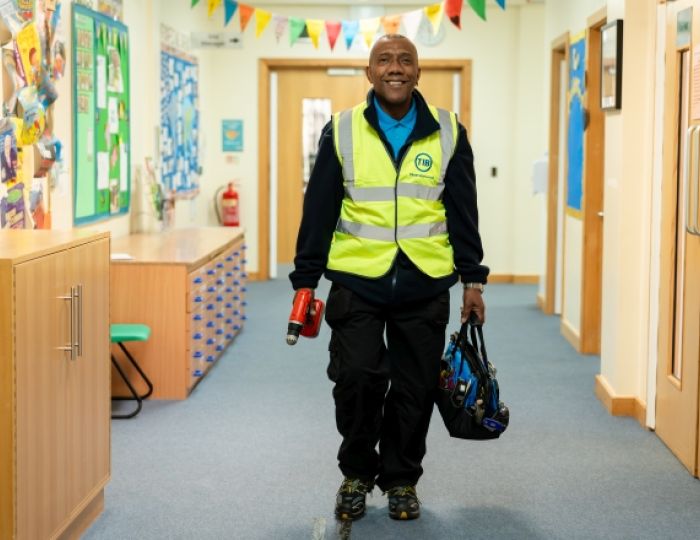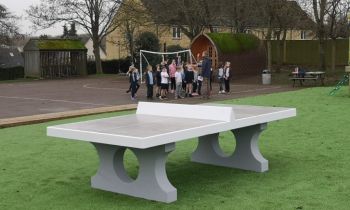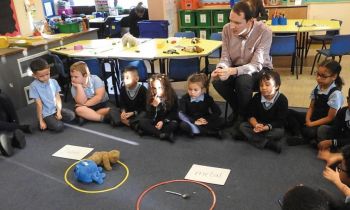Like so many others, St Bartholomew’s CE Multi-Academy Trust were forced to take swift action back in March to ensure pupil learning could continue and staff remained safe throughout the height of the coronavirus pandemic.
Back in March, staff, pupils and parents across the country were forced to adapt to new ways of working as a nationwide lockdown was announced and the majority of our pupils were sent home. Of course, no two families are the same and it was important we carefully managed the transition to home learning, taking into account different learning environments and the technology pupils could access.
These first few months were certainly a learning curve and we were mindful that parents were being asked to navigate a system of unfamiliar learning tools and content. A study published by the Institute of Fiscal Studies back in May found that almost 60 per cent of the parents of primary school children and almost half of the parents of secondary school children were finding it quite or very hard to support their children’s learning at home.
To help combat this we quickly set up communication channels between teachers and pupils, and between teachers and parents, to ensure the children could continue making progress on the core curriculum and access any support required.
Boost
Unlike secondary schools, which could relatively easily shift their curriculum online we had to consider the age of our pupils. As our Trust is entirely made up of primary schools, we concluded that digital learning wasn’t a feasible option, so we instead arranged regular catch-up phone and video calls, and kept in close contact with parents via email.
Chatting to their teachers and their friends either in conference calls or over the phone gave some of our pupils a real boost, helping to reduce feelings of isolation and remind them that we’re still part of the same community. Despite schools reopening to all year groups back in September, local closures and the second national lockdown has led to many children feeling anxious or concerned about the impact this might have. We’re confident that many of the practices we implemented at the start of the pandemic can be rolled out again, either on a smaller scale if a class or year group is asked to self-isolate or to the same extent – ensuring that no pupil is left behind academically.
Unrealistic
Across the UK experts predict that around nine per cent of families don’t have a laptop, desktop or tablet at home, so we were keen to assess the individual needs and requirements of each of our pupils. We looked to put together home learning packs which included information, worksheets and activity packs for children to work through. It was unrealistic to expect our pupils – some as young as four, to follow the curriculum word for word, and we acknowledged that many parents were having to manage a careful balancing act between remote working and home schooling, as well as cope with the pressures of lockdown.
While digital alternatives will never replace a teacher, we’re looking to embed technology into the classroom over the next few years, having proven itself as a valuable tool in helping pupils learn and develop. The primary school curriculum is far less progressive than in secondary schools, with a much slower uptake of online learning platforms, however, lockdown has certainly opened our eyes to the benefits of digitalisation and I’d say we’re now far more effective in our use of technology.
With the goal of ensuring every school was getting the support it needed, we formed our central services team approximately two years ago. The fact we already had such a well established team in place stood us in good stead when the pandemic hit. Throughout the spring and summer term, we really did rely on this additional support to manage internal and external communication, and ensure all staff and parents were contacted with updates as and when necessary.
Suppliers
In the early days, the advice from the government and the DfE changed on a daily basis, and it was vital everyone was kept informed. Looking ahead, we’re keen to move more of our communications online, with email and text messages proving popular with parents.
Despite our schools being closed to pupils, the financial management of the Trust had to continue as normal. In such challenging times we were keen to ensure our suppliers continued to be paid on time. Also, keeping our finances in good check gave us a clear picture of where we’d lost or saved, and allowed us to put plans in place to deal with these changes.
Finance teams who were unable to access their central system from home will have had to play a serious game of catch-up to ensure they completed their annual audit on time. Luckily, our staff could access the necessary information and reports via the Access Education software remotely, ensuring that many of the day-to-day financial processes continued as normal – even during the height of lockdown.
Via the system staff could also scan and attach PDF versions of invoices, receipts and proof of funding, ensuring that when it came to the annual audit we weren’t tasked with uploading and inputting a huge amount of crucial data. This has prompted us to review some of our other legacy systems, as we’re keen to invest in additional cloud-based software to help mitigate any future challenges.
It’s definitely been a strange and challenging time for pupils, parents and staff all coping with the impact of the pandemic in slightly different ways. As a Trust, we were keen to ensure we put the best measures in place to minimise disruption and ensure some level of learning could continue. As we look ahead I’m confident that we’re in a better position to manage any challenges thrown our way.
What you need to know
Five top tips on how to tackle some of the unique challenges faced by primary schools:
- Carefully manage the transition to home learning, as no two families are the same.
- Remember, many parents are being asked to navigate a system of unfamiliar learning tools and content that isn’t necessarily straightforward to understand.
- Set up communication channels between teachers and pupils, and between teachers and parents, to ensure the children can continue making progress on the core curriculum and access any support required.
- Reduce feelings of isolation and remind everyone that they’re still part of the same community by implementing video calls – these helped give our pupils and staff a real boost.
- Assess the individual needs and requirements of every pupil as some families don’t have a laptop, desktop or tablet at home.
Christopher Dryer is Director of Finance and Operations at St Bartholomew’s CE Multi-Academy Trust.










